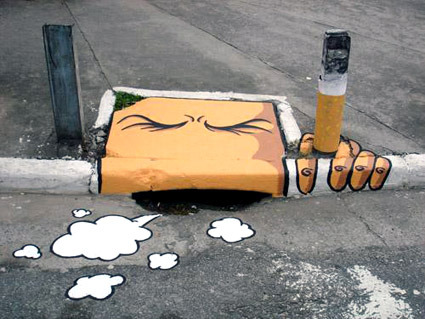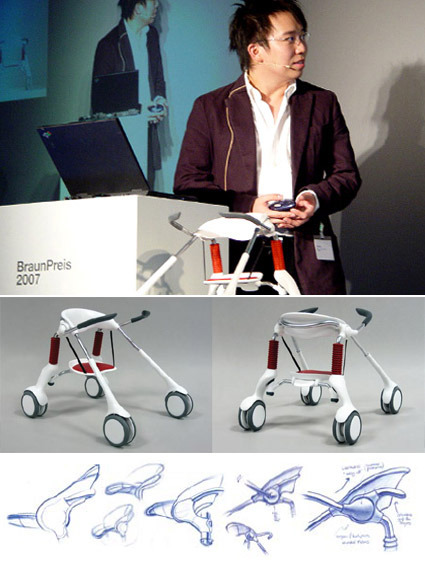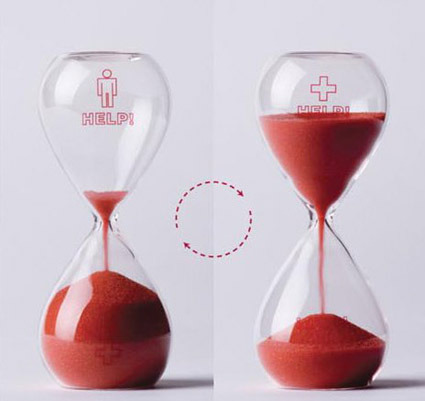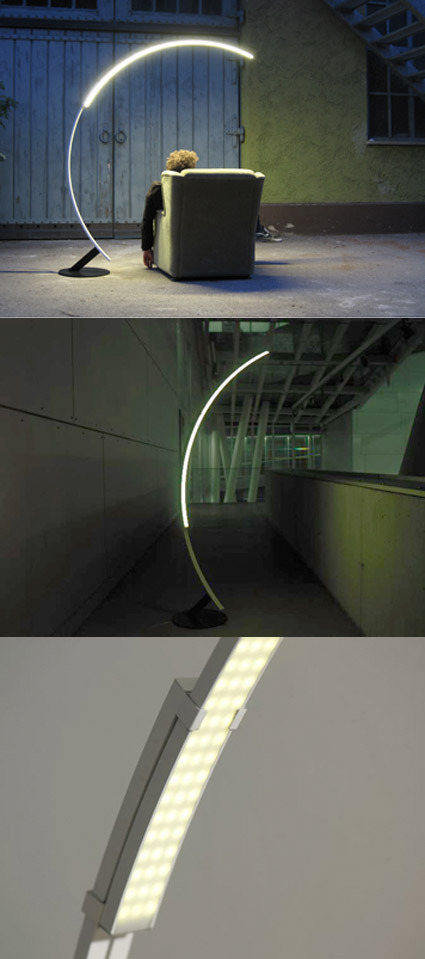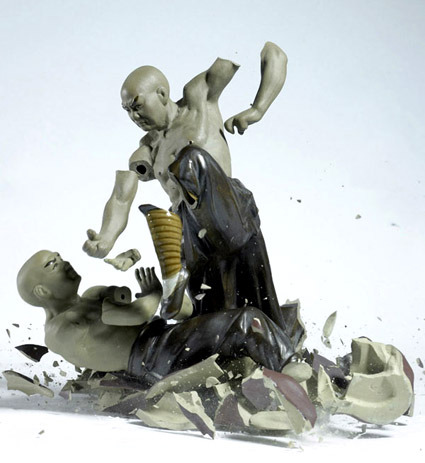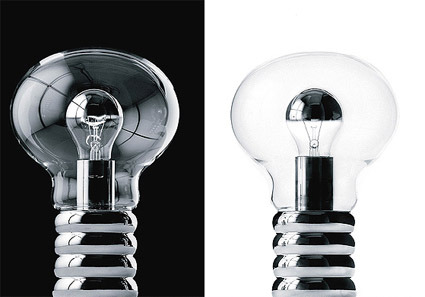
Ingo Maurer, one of the luminaries especially in the fields of lighting designs, is showcasing some of his latest works over at Cooper-Hewitt.
The 75-year-old Maurer, whose light-bathed work ranges from macro-scale sculptures of flowing, gilded ribbons to chandeliers reconstructed from shards of exploded tableware, is a visionary—an artist as well as a technical and entrepreneurial innovator. For 40 years, Maurer has been in the vanguard of a technological and aesthetic revolution that has transformed lighting from a mere convenience into a high-cachet object of desire. In the process, he has worked with designers from companies including Chanel, Issey Miyake, and DaimlerBenz (DAI)—and become a guru to artists and commercial manufacturers alike.
Of all the lights, my favorite is the one above. At first glance, I didn’t even realize what was special about it – thinking perhaps it’s just a play of scale – blowing up the traditional and familiar silhouette of a bulb into a more surprising size. It was only through the second read that I discovered the bulb nested within the bulb. I can’t really pinpoint exactly why this fascinates me, but somehow it did.
Perhaps it’s a reminder. In my daily routine I typically come across tens or even hundreds of designs in various kinds. This has almost conditioned my eyes to fleet through and in this case, I got caught drawing my own conclusions before really looking at the picture. Perhaps it’s a reminder to look at every product and savor them in detail – soak in a design before jumping to conclusions.
[Business Week on Maurer’s work]


